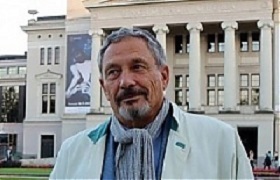Editor's note
International Internet Magazine. Baltic States news & analytics
Friday, 19.04.2024, 07:22
Latvian political agenda: in line with the EU’s examples
 Print version
Print version |
|---|
Complicated issues of state governance have acquired
considerable attention in political science recently. Previously, traditional
free-market management, so-called laissez-faire
system, did not leave much room for a state interference. It used to be an
economic doctrine that restricted government regulation and interference into
economy and commerce beyond a “necessary minimum”: numerous states around the
world explore such a system.
However, in the European region, it is mostly a
state-managed system which often creates certain politic turmoil, e.g. as it is
in forming a government of “united interests”. Of course, in the last instance,
it’s the people’s understanding of a functional democracy: in simple words, the people’s approach to a
self-governance, as the word implies.
Italian example in governance
Political scene in Italy has been always full of unsettled
compromises: during 74 years after the II World War there were 65 governments
with all possible coalitions!
After general elections in March 2018, there were two main
parties for forming a government (which is a rear situation in itself): so-called
“5-stars movement” (headed by 31-old
Luigi Di Majo) and Liga with Matteo Salvini as a party leader. After months of fierce
negotiations, the two sides made a “contract” to manage and exercise the national
policies.
In a simple way, the contract was really mafia-kind of “division of power”: i.e. 5-stars party took
such socio-economic spheres as labour market, general development, pensions,
etc. The Liga took over the national defence, other internal security issues,
immigration affairs, etc. In this way Italian elites “divided” national issues
between the two “actors” in a mafia-type way: each was about to manage its
“territory” without the other side’s interference! It’s like soccer game where
each team plays by its own rules.
As a result, Liga’s boss, M. Salvini, also heading internal affairs
ministry, manages vital national migration’s issues according his own preferences
(better say, the American way), while the country’s prime minister, who is
supposed to be a kind of referee, doesn’t interfere at all. Another leader, Di Majo supports “yellow
jacket” movement in France without even consulting the country’s foreign office,
which is headed by his party-fellow, law professor Moavero.
In this way, both “camps’ leaders” attracted huge popular
attraction by “confronting” France and Germany, which they accused of all
Italian failures in economy and unemployment.
Swedish example of “constructive coordination”
Major issues in
the last national elections in May 2018, which the Swedish voters considered important,
were immigration, healthcare, environment quality and integration.
The “red-green
coalition” of social democrats, SD and Greens, with the backing of Left party won
144 seats, which was however short of a needed majority; however, the social democrats'
vote share fell to 28.3%, the lowest level in a century. The center-left
bloc with 40, 6% and the center-rights bloc with about 40% “divided” the
national political interests.
After about 130 days of negotiations, several Swedish
parties reached an agreement: social
democrats, SD (which run the country since 2012 with its leader Stefan
Löfven), new moderates with liberal
conservatism ideas (Moderaterna), Sweden
Democrats (with social conservatism and nationalism), liberal and agro Center Party and Left Party (with “green” ideology).
But the SD has shown this January that another way existed besides
that of traditional blocking and polarizing (used to be in other countries):
suggesting constructive coordination among the “center” and “liberals”. The
latter received people’s appreciation as politicians put aside personal
political/sectoral ambitions in favor of the country’s interests without exploring
far-right nationalism feelings. As the SD’s leader underlined, “nobody got all,
but all got something and the big winner was Sweden”.
However, finally,
on 18th of January the SD managed through a coordinated approach,
which actually was a victory for the European social-democrats in
general, as none of the EU “socialist” leaders could to power during a last
decade.
Bottom line: may
be present Latvian political elites and governing structures with 9 different
political “interests” do not fit into the modern concept of European political
culture. The possibility of cooperation only leads presently into a lot of trouble
about “constructing” a functional state administration system.
Latvian constitutional principle of creating a welfare
system - as an utmost goal in national development implies one vital purpose
and/or aim, i.e. people’s welfare and happiness. Why it is so difficult to find
a common strategy and consequential tactics towards that aim?
All these questions are generally rhetoric: most people do
know the answers. It’s funny that political elites pretend not to show a common
sense…
On the other hand, it is seen in various countries that
state affairs can survive without governing political elites: state
administration functions anyway! Italian and Swedish politically turbulent scenes
provide some examples to that extent and Latvian political elites have something
to emulate or to choose from these examples…











